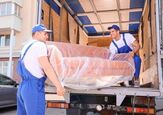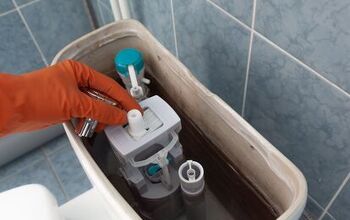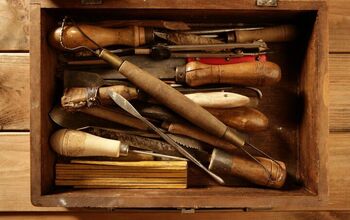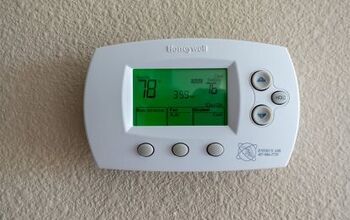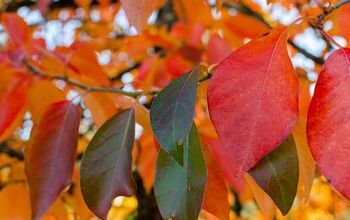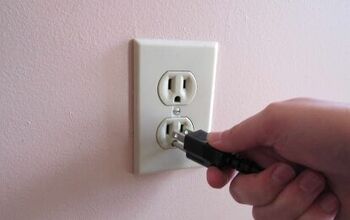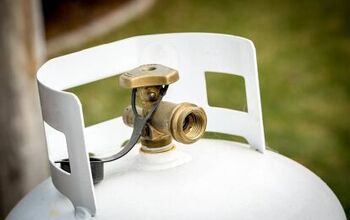14 Ways To Wasp-Proof Your Yard In The Fall

Wasps are often misunderstood and feared creatures. While they are effective pollinators and beneficial to your garden, most people want them as far away as possible. When you see dozens of these flying and stinging bugs swarming around you on your property, you’ll want to do something about it, and fast.
Patching up holes, removing old nests, and covering potential nesting locations are great ways to wasp-proof your home in the fall. Remove or cover food sources, including fallen fruit, compost piles, and outside trash. Incorporate plants that repel these insects, such as marigolds, peppermint, basil, and thyme. Use store-bought sprays or natural DIY solutions to repel wasps, and use traps to kill them, too.
The fall is the perfect time to wasp-proof your home. If you take the proper steps to get rid of these bugs and their dwellings during this season, there’s a good chance they won’t return to your yard in the spring. If you have a wasp problem and are desperate to get rid of them, then this article is for you. Below is a list of highly effective DIY methods to wasp-proof your home this autumn.
14 Ways To Make Your Yard Wasp-Free This Fall
1. Patch Up Holes And Cracks
Holes and cracks in your home’s exterior can be the future (or current) home for wasps.
Seal any cracks and fill any holes you find on your home, as well as on your outdoor furniture and decks.
The goal is to remove any desirable nesting location for these stinging insects. If wasps can't find a good place to live on your property, they will choose a different yard to build a home.
2. Spray Surfaces With Natural Wasp Repellent
If you prefer a natural and non-lethal method for getting rid of wasps, consider using various essential oils to create a wasp-deterring spray. There are several smells that wasps hate and will send them flying in the opposite direction.
Some of the best oils to mix to create an organic wasp repellent include peppermint, clove, geranium, and lemongrass. Spray surfaces frequently to keep wasps away for good, as these oil fragrances fade, especially after it rains.
3. Cover Your Compost
Wasps tend to make their home in areas where there is a reliable food source. Compost piles, especially ones with food scraps, are wasp magnets. These stinging bugs are attracted to sugary foods, especially those that are decomposing.
Covering your compost pile or using quality compost bins will make your yard less attractive to wasps, as it eliminates this food source. Covering compost will keep many other pests away, too, such as rodents and other burrowing animals that you want to deter from your yard.
4. Pick Up Fallen Fruit Promptly
If you have fruit trees in your yard, you must remain diligent about removing fruit that falls to the ground. Ripe, rotting fruit will attract wasps from near and far. As soon as you see fruit on the ground, pick it up and dispose of it. Removing this sweet food source will make your yard less appealing to wasps.
5. Use Store-Bought Wasp Spray To Treat Wasp Hot Spots
If you don’t mind taking a more lethal approach to your wasp problem, you can buy one of the many wasp sprays available in home and garden stores. These sprays are fast-acting, effective, and highly effective in getting rid of wasps.
The sprays kill wasps almost instantly, and also kill larvae that are growing inside their nests, which can effectively eliminate the entire colony. Ensure you buy a spray that has a long reach, as these sprays allow you to stay a safe distance from the nest. Always cover your skin and stay as far away from the nest whenever spraying an active nest.
6. Install Wasp Traps
If you don’t want to risk getting stung by wasps by spraying their nest, consider playing the long game. There are many traps you can purchase that will slowly get rid of your wasp problem.
You can choose from various types. There are electric traps, traps that use bait, and other trap designs. If you know which type of wasps you have, see if one kind of trap is known to work better than others, and choose accordingly.
7. Keep A Lid On Your Trash
If you store your trash bins outside while waiting for trash day, remember always to keep them covered. When you cover your trash, you eliminate another food source for wasps, making them less likely to linger. Ensure your trash lids lock correctly, as this will prevent animals like raccoons from opening them.
8. Fill Any Holes You Find In Your Yard
While some wasps create nests attached to your home and deck, others live underground. Both digger wasps and yellow jackets make homes in holes they find in yards. One great way to prevent these bugs from making a home in your yard in the fall is to patch up any holes you see in your lawn. As part of your fall landscaping checklist, ensure that you fill holes with soil. Not only will this eliminate a potential wasp dwelling, but it will also set your lawn up for success come springtime.
9. Plan A Wasp-Repellent Garden For Next Year
You can add several plants to your garden to repel wasps. By strategically growing these wasp-deterring plants, you can significantly reduce the likelihood that these bugs will make a permanent home in your yard.
Some flowering plants that you can add to your garden to repel wasps include marigolds, lavender, and geraniums. Herbs and fragrant plants that are effective at keeping wasps away include mint, lemongrass, eucalyptus, citronella, thyme, and cloves, among other herbs.
10. Investigate And Destroy Existing Nests
As you prepare your home’s exterior for winter, it’s a good idea to keep an eye out for active and inactive wasp nests. As you notice nests, take note and devise a plan to destroy and remove them in the fall or winter. By getting rid of existing nests, you reduce the risk that wasps will return to them next year. Just ensure there are no living wasps in a nest before you try to remove it.
11. Install Decoy Nests
Wasps are territorial insects. If they notice a nearby nest, there is a good chance they will fly away and build a home elsewhere. Therefore, if you install various artificial or “decoy” wasp nests around your yard, you can potentially trick wasps into leaving your property for good. In the fall, scout out various locations and install these decoys, so they are established before the insects return to build nests in the spring.
12. Prune And Trim Your Perennials
Wasps love overgrown bushes and hedges, where they can build nests, hunt for food, and shelter from potential predators. In the fall, prune your plants, trim your hedges, and remove all clutter and overgrown plants from the yard.
This will give your yard more curb appeal in the winter and spring, and it can also reduce the risk of wasps returning to your yard.
13. Make A DIY Wasp Trap Using Vinegar
If you want to turn wasp-proofing your home into a DIY project, then consider creating wasp traps using household items, including vinegar. The easiest wasp trap method is to cut a hole in a two-liter soda bottle and add a mixture of apple cider vinegar, sugar, water, and dish soap. This liquid will attract wasps, and they will become trapped in the bottle, eventually drowning in the soapy solution. These traps are easy to make and highly effective at killing wasps.
14. Call A Professional If Your Wasp Problem Gets Worse
If you’ve tried other methods on this list and your wasp problem keeps getting worse, consider enlisting the help of a professional. Wasps are territorial about their space and will attack when they feel threatened.
If you have many active wasp nests on your property, getting rid of them yourself could be dangerous. Hire a reliable professional in the fall to ensure these bugs are removed safely, completely, and won’t return in the spring.
Wrapping Up Ways To Wasp-Proof Your Home In The Fall
Wasps might be helpful pollinators, but no one wants to have a yard that’s filled with these flying and stinging pests. To help wasp-proof your home in the fall, remove all food sources, and get rid of any empty nests. Use wasp deterrent sprays, and start planning a garden that incorporates flowers and herbs that repel these bugs.
You can install store-bought wasp traps or make a DIY trap using household materials. Add decoy wasp nests, as these bugs are territorial and won’t build a new nest near an existing one. If your wasp problem continues to get worse, hire a professional in the fall to help completely eradicate wasps from your yard.
Related Guides:
- How To Control Pests Without Pesticides
- Who Do You Call To Get Rid Of A Hornet’s Nest?
- Pests That Can Chew Through Window Screens

Tom Gaffey is an expert writer who currently resides in Washington D.C. Tom has a passion for real estate and home improvement writing, as well as travel and lifestyle writing. He lived the last twelve years in Hawaii where he worked closely with luxury resorts and event planners, mastering his knowledge of aesthetics and luxury products. This is where he found his passion for home improvement and a keen interest in DIY projects. Currently, Tom resides in Washington D.C, and also working on his debut fiction novel.
More by Tom Gaffey
